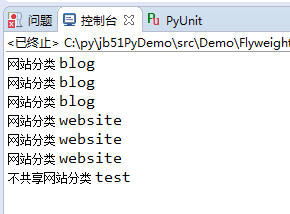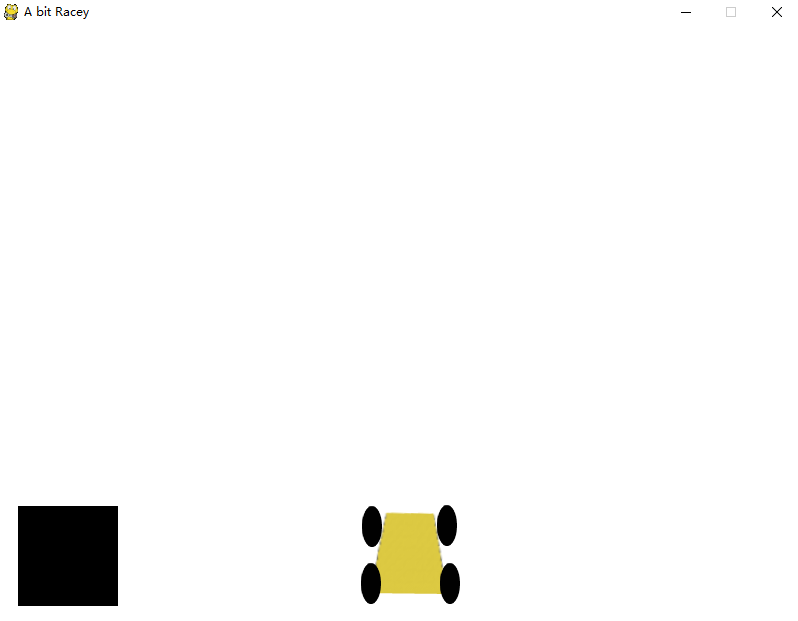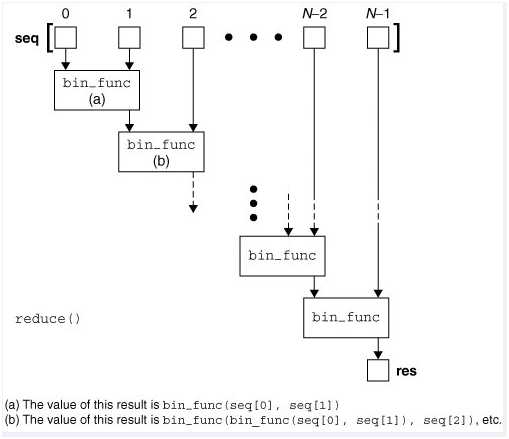Flask的图形化管理界面搭建框架Flask-Admin的使用教程
Flask-Admin是Flask框架的一个扩展,用它能够快速创建Web管理界面,它实现了比如用户、文件的增删改查等常用的管理功能;如果对它的默认界面不喜欢,可以通过修改模板文件来定制;
Flask-Admin把每一个菜单(超链接)看作一个view,注册后才能显示出来,view本身也有属性来控制其是否可见;因此,利用这个机制可以定制自己的模块化界面,比如让不同权限的用户登录后看到不一样的菜单;
项目地址:https://flask-admin.readthedocs.io/en/latest/
example/simple
这是最简单的一个样例,可以帮助我们快速、直观的了解基本概念,学会定制Flask-Admin的界面
simple.py:
from flask import Flask
from flask.ext import admin
# Create custom admin view
class MyAdminView(admin.BaseView):
@admin.expose('/')
def index(self):
return self.render('myadmin.html')
class AnotherAdminView(admin.BaseView):
@admin.expose('/')
def index(self):
return self.render('anotheradmin.html')
@admin.expose('/test/')
def test(self):
return self.render('test.html')
# Create flask app
app = Flask(__name__, template_folder='templates')
app.debug = True
# Flask views
@app.route('/')
def index():
return '<a href="/admin/">Click me to get to Admin!</a>'
# Create admin interface
admin = admin.Admin()
admin.add_view(MyAdminView(category='Test'))
admin.add_view(AnotherAdminView(category='Test'))
admin.init_app(app)
if __name__ == '__main__':
# Start app
app.run()
在这里可以看到运行效果
BaseView
class BaseView(name=None, category=None, endpoint=None, url=None, static_folder=None, static_url_path=None)
name: view在页面上表现为一个menu(超链接),menu name == 'name',缺省就用小写的class name
category: 如果多个view有相同的category就全部放到一个dropdown里面(dropdown name=='category')
endpoint: 假设endpoint='xxx',则可以用url_for(xxx.index),也能改变页面URL(/admin/xxx)
url: 页面URL,优先级url > endpoint > class name
static_folder: static目录的路径
static_url_path: static目录的URL
anotheradmin.html:
{% extends 'admin/master.html' %}
{% block body %}
Hello World from AnotherMyAdmin!<br/>
<a href="{{ url_for('.test') }}">Click me to go to test view</a>
{% endblock %}
如果AnotherAdminView增加参数endpoint='xxx',那这里就可以写成url_for('xxx.text'),然后页面URL会由/admin/anotheradminview/变成/admin/xxx
如果同时指定参数url='aaa',那页面URL会变成/admin/aaa,url优先级比endpoint高
Admin
class Admin(app=None, name=None, url=None, subdomain=None, index_view=None, translations_path=None, endpoint=None, static_url_path=None, base_template=None)
name: Application name,缺省'Admin';会显示为main menu name('Home'左边的'Admin')和page title
subdomain: ???
index_view: 'Home'那个menu对应的就叫index view,缺省AdminIndexView
base_template: 基础模板,缺省admin/base.html,该模板在Flask-Admin的源码目录里面
部分Admin代码如下:
class MenuItem(object):
"""
Simple menu tree hierarchy.
"""
def __init__(self, name, view=None):
self.name = name
self._view = view
self._children = []
self._children_urls = set()
self._cached_url = None
self.url = None
if view is not None:
self.url = view.url
def add_child(self, view):
self._children.append(view)
self._children_urls.add(view.url)
class Admin(object):
def __init__(self, app=None, name=None,
url=None, subdomain=None,
index_view=None,
translations_path=None,
endpoint=None,
static_url_path=None,
base_template=None):
self.app = app
self.translations_path = translations_path
self._views = []
self._menu = []
self._menu_categories = dict()
self._menu_links = []
if name is None:
name = 'Admin'
self.name = name
self.index_view = index_view or AdminIndexView(endpoint=endpoint, url=url)
self.endpoint = endpoint or self.index_view.endpoint
self.url = url or self.index_view.url
self.static_url_path = static_url_path
self.subdomain = subdomain
self.base_template = base_template or 'admin/base.html'
# Add predefined index view
self.add_view(self.index_view)
# Register with application
if app is not None:
self._init_extension()
def add_view(self, view):
# Add to views
self._views.append(view)
# If app was provided in constructor, register view with Flask app
if self.app is not None:
self.app.register_blueprint(view.create_blueprint(self))
self._add_view_to_menu(view)
def _add_view_to_menu(self, view):
if view.category:
category = self._menu_categories.get(view.category)
if category is None:
category = MenuItem(view.category)
self._menu_categories[view.category] = category
self._menu.append(category)
category.add_child(MenuItem(view.name, view))
else:
self._menu.append(MenuItem(view.name, view))
def init_app(self, app):
self.app = app
self._init_extension()
# Register views
for view in self._views:
app.register_blueprint(view.create_blueprint(self))
self._add_view_to_menu(view)
从上面的代码可以看出init_app(app)和Admin(app=app)是一样的:
将每个view注册为blueprint(Flask里的概念,可以简单理解为模块)
记录所有view,以及所属的category和url
AdminIndexView
class AdminIndexView(name=None, category=None, endpoint=None, url=None, template='admin/index.html')
name: 缺省'Home'
endpoint: 缺省'admin'
url: 缺省'/admin'
如果要封装出自己的view,可以参照AdminIndexView的写法:
class AdminIndexView(BaseView):
def __init__(self, name=None, category=None,
endpoint=None, url=None,
template='admin/index.html'):
super(AdminIndexView, self).__init__(name or babel.lazy_gettext('Home'),
category,
endpoint or 'admin',
url or '/admin',
'static')
self._template = template
@expose()
def index(self):
return self.render(self._template)
base_template
base_template缺省是/admin/base.html,是页面的主要代码(基于bootstrap),它里面又import admin/layout.html;
layout是一些宏,主要用于展开、显示menu;
在模板中使用一些变量来取出之前注册view时保存的信息(如menu name和url等):
# admin/layout.html (部分)
{% macro menu() %}
{% for item in admin_view.admin.menu() %}
{% if item.is_category() %}
{% set children = item.get_children() %}
{% if children %}
{% if item.is_active(admin_view) %}<li class="active dropdown">{% else %}<li class="dropdown">{% endif %}
<a class="dropdown-toggle" data-toggle="dropdown" href="javascript:void(0)">{{ item.name }}<b class="caret"></b></a>
<ul class="dropdown-menu">
{% for child in children %}
{% if child.is_active(admin_view) %}<li class="active">{% else %}<li>{% endif %}
<a href="{{ child.get_url() }}">{{ child.name }}</a>
</li>
{% endfor %}
</ul>
</li>
{% endif %}
{% else %}
{% if item.is_accessible() and item.is_visible() %}
{% if item.is_active(admin_view) %}<li class="active">{% else %}<li>{% endif %}
<a href="{{ item.get_url() }}">{{ item.name }}</a>
</li>
{% endif %}
{% endif %}
{% endfor %}
{% endmacro %}
example/file
这个样例能帮助我们快速搭建起文件管理界面,但我们的重点是学习使用ActionsMixin模块
file.py:
import os
import os.path as op
from flask import Flask
from flask.ext import admin
from flask.ext.admin.contrib import fileadmin
# Create flask app
app = Flask(__name__, template_folder='templates', static_folder='files')
# Create dummy secrey key so we can use flash
app.config['SECRET_KEY'] = '123456790'
# Flask views
@app.route('/')
def index():
return '<a href="/admin/">Click me to get to Admin!</a>'
if __name__ == '__main__':
# Create directory
path = op.join(op.dirname(__file__), 'files')
try:
os.mkdir(path)
except OSError:
pass
# Create admin interface
admin = admin.Admin(app)
admin.add_view(fileadmin.FileAdmin(path, '/files/', name='Files'))
# Start app
app.run(debug=True)
FileAdmin是已经写好的的一个view,直接用即可:
class FileAdmin(base_path, base_url, name=None, category=None, endpoint=None, url=None, verify_path=True)
base_path: 文件存放的相对路径
base_url: 文件目录的URL
FileAdmin中和ActionsMixin相关代码如下:
class FileAdmin(BaseView, ActionsMixin):
def __init__(self, base_path, base_url,
name=None, category=None, endpoint=None, url=None,
verify_path=True):
self.init_actions()
@expose('/action/', methods=('POST',))
def action_view(self):
return self.handle_action()
# Actions
@action('delete',
lazy_gettext('Delete'),
lazy_gettext('Are you sure you want to delete these files?'))
def action_delete(self, items):
if not self.can_delete:
flash(gettext('File deletion is disabled.'), 'error')
return
for path in items:
base_path, full_path, path = self._normalize_path(path)
if self.is_accessible_path(path):
try:
os.remove(full_path)
flash(gettext('File "%(name)s" was successfully deleted.', name=path))
except Exception as ex:
flash(gettext('Failed to delete file: %(name)s', name=ex), 'error')
@action('edit', lazy_gettext('Edit'))
def action_edit(self, items):
return redirect(url_for('.edit', path=items))
@action()用于wrap跟在后面的函数,这里的作用就是把参数保存起来:
def action(name, text, confirmation=None)
def wrap(f):
f._action = (name, text, confirmation)
return f
return wrap
name: action name
text: 可用于按钮名称
confirmation: 弹框确认信息
init_actions()把所有action的信息保存到ActionsMixin里面:
# 调试信息
_actions = [('delete', lu'Delete'), ('edit', lu'Edit')]
_actions_data = {'edit': (<bound method FileAdmin.action_edit of <flask_admin.contrib.fileadmin.FileAdmin object at 0x1aafc50>>, lu'Edit', None), 'delete': (<bound method FileAdmin.action_delete of <flask_admin.contrib.fileadmin.FileAdmin object at 0x1aafc50>>, lu'Delete', lu'Are you sure you want to delete these files?')}
action_view()用于处理POST给/action/的请求,然后调用handle_action(),它再调用不同的action处理,最后返回当前页面:
# 省略无关代码
def handle_action(self, return_view=None):
action = request.form.get('action')
ids = request.form.getlist('rowid')
handler = self._actions_data.get(action)
if handler and self.is_action_allowed(action):
response = handler[0](ids)
if response is not None:
return response
if not return_view:
url = url_for('.' + self._default_view)
else:
url = url_for('.' + return_view)
return redirect(url)
ids是一个文件清单,作为参数传给action处理函数(参数items):
# 调试信息 ids: [u'1.png', u'2.png']
再分析页面代码,Files页面对应文件为admin/file/list.html,重点看With selected下拉菜单相关代码:
{% import 'admin/actions.html' as actionslib with context %}
{% if actions %}
<div class="btn-group">
{{ actionslib.dropdown(actions, 'dropdown-toggle btn btn-large') }}
</div>
{% endif %}
{% block actions %}
{{ actionslib.form(actions, url_for('.action_view')) }}
{% endblock %}
{% block tail %}
{{ actionslib.script(_gettext('Please select at least one file.'),
actions,
actions_confirmation) }}
{% endblock %}
上面用到的三个宏在actions.html:
{% macro dropdown(actions, btn_class='dropdown-toggle') -%}
<a class="{{ btn_class }}" data-toggle="dropdown" href="javascript:void(0)">{{ _gettext('With selected') }}<b class="caret"></b></a>
<ul class="dropdown-menu">
{% for p in actions %}
<li>
<a href="javascript:void(0)" onclick="return modelActions.execute('{{ p[0] }}');">{{ _gettext(p[1]) }}</a>
</li>
{% endfor %}
</ul>
{% endmacro %}
{% macro form(actions, url) %}
{% if actions %}
<form id="action_form" action="{{ url }}" method="POST" style="display: none">
{% if csrf_token %}
<input type="hidden" name="csrf_token" value="{{ csrf_token() }}"/>
{% endif %}
<input type="hidden" id="action" name="action" />
</form>
{% endif %}
{% endmacro %}
{% macro script(message, actions, actions_confirmation) %}
{% if actions %}
<script src="{{ admin_static.url(filename='admin/js/actions.js') }}"></script>
<script language="javascript">
var modelActions = new AdminModelActions({{ message|tojson|safe }}, {{ actions_confirmation|tojson|safe }});
</script>
{% endif %}
{% endmacro %}
最终生成的页面(部分):
<div class="btn-group">
<a class="dropdown-toggle btn btn-large" href="javascript:void(0)" data-toggle="dropdown">
With selected
<b class="caret"></b>
</a>
<ul class="dropdown-menu">
<li>
<a onclick="return modelActions.execute('delete');" href="javascript:void(0)">Delete</a>
</li>
<li>
<a onclick="return modelActions.execute('edit');" href="javascript:void(0)">Edit</a>
</li>
</ul>
</div>
<form id="action_form" action="/admin/fileadmin/action/" method="POST" style="display: none">
<input type="hidden" id="action" name="action" />
</form>
<script src="/admin/static/admin/js/actions.js"></script>
<script language="javascript">
var modelActions = new AdminModelActions("Please select at least one file.", {"delete": "Are you sure you want to delete these files?"});
</script>
选择菜单后的处理方法在actions.js:
var AdminModelActions = function(actionErrorMessage, actionConfirmations) {
// Actions helpers. TODO: Move to separate file
this.execute = function(name) {
var selected = $('input.action-checkbox:checked').size();
if (selected === 0) {
alert(actionErrorMessage);
return false;
}
var msg = actionConfirmations[name];
if (!!msg)
if (!confirm(msg))
return false;
// Update hidden form and submit it
var form = $('#action_form');
$('#action', form).val(name);
$('input.action-checkbox', form).remove();
$('input.action-checkbox:checked').each(function() {
form.append($(this).clone());
});
form.submit();
return false;
};
$(function() {
$('.action-rowtoggle').change(function() {
$('input.action-checkbox').attr('checked', this.checked);
});
});
};
对比一下修改前后的表单:
# 初始化 <form id="action_form" style="display: none" method="POST" action="/admin/fileadmin/action/"> <input id="action" type="hidden" name="action"> </form> # 'Delete'选中的三个文件 <form id="action_form" style="display: none" method="POST" action="/admin/fileadmin/action/"> <input id="action" type="hidden" name="action" value="delete"> <input class="action-checkbox" type="checkbox" value="1.png" name="rowid"> <input class="action-checkbox" type="checkbox" value="2.png" name="rowid"> <input class="action-checkbox" type="checkbox" value="3.png" name="rowid"> </form> # 'Edit'选中的一个文件 <form id="action_form" style="display: none" method="POST" action="/admin/fileadmin/action/"> <input id="action" type="hidden" name="action" value="edit"> <input class="action-checkbox" type="checkbox" value="1.png" name="rowid"> </form>
总结一下,当我们点击下拉菜单中的菜单项(Delete,Edit),本地JavaScript代码会弹出确认框(假设有确认信息),然后提交一个表单给/admin/fileadmin/action/,请求处理函数action_view()根据表单类型再调用不同的action处理函数,最后返回一个页面。
Flask-Admin字段(列)格式化
在某些情况下,我们需要对模型的某个属性进行格式化。比如,默认情况下,日期时间显示出来会比较长,这时可能需要只显示月和日,这时候,列格式化就派上用场了。
比如,如果你要显示双倍的价格,你可以这样做:
class MyModelView(BaseModelView): column_formatters = dict(price=lambda v, c, m, p: m.price*2)
或者在Jinja2模板中使用宏:
from flask.ext.admin.model.template import macro
class MyModelView(BaseModelView):
column_formatters = dict(price=macro('render_price'))
# in template
{% macro render_price(model, column) %}
{{ model.price * 2 }}
{% endmacro %}
回调函数模型:
def formatter(view, context, model, name): # `view` is current administrative view # `context` is instance of jinja2.runtime.Context # `model` is model instance # `name` is property name pass
正好和上面的v, c, m, p相对应。


